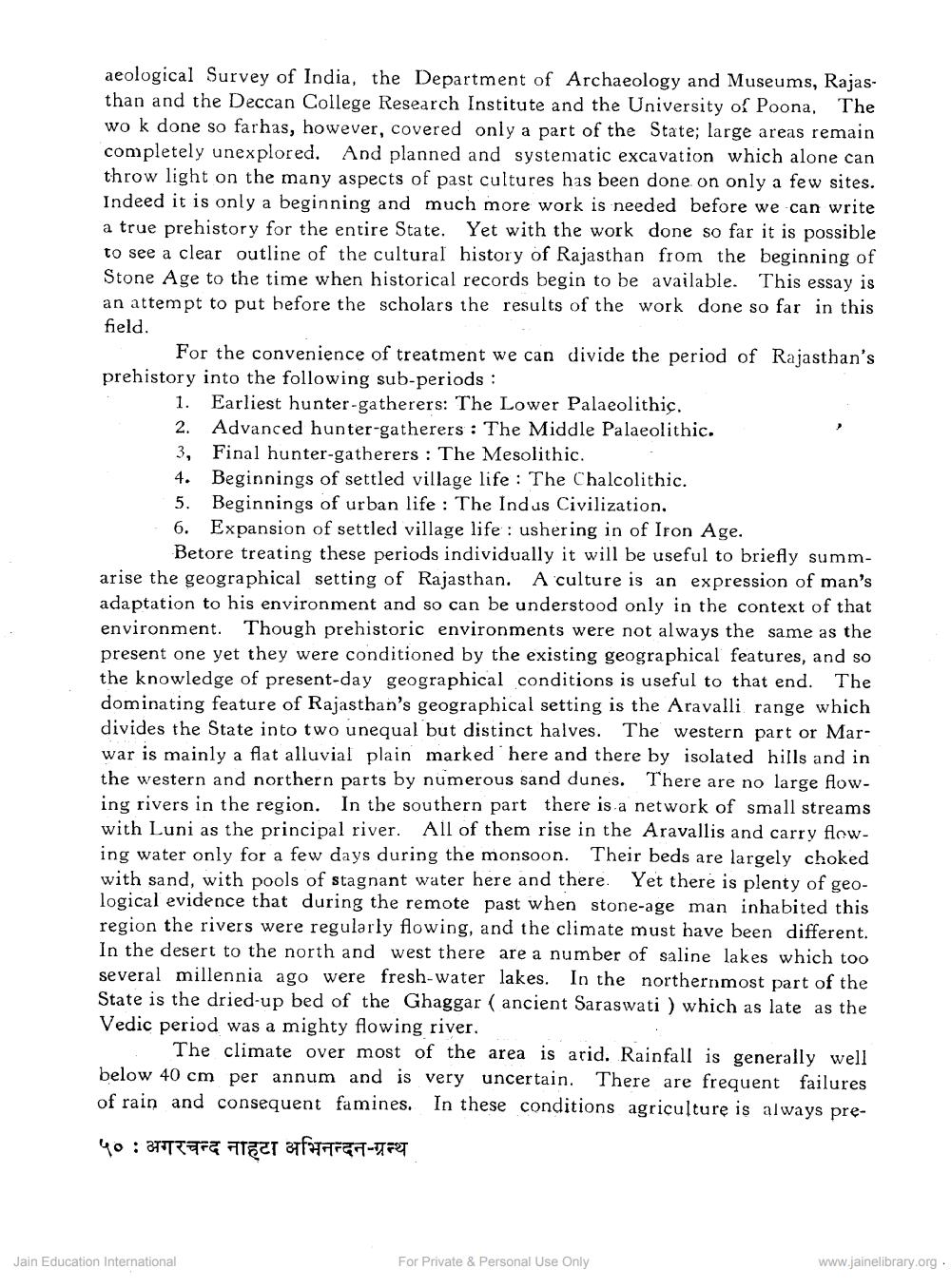Book Title: Prehistoric Background of Rajasthan Culture Author(s): V N Misra Publisher: Z_Agarchand_Nahta_Abhinandan_Granth_Part_2_012043.pdf View full book textPage 2
________________ aeological Survey of India, the Department of Archaeology and Museums, Rajasthan and the Deccan College Research Institute and the University of Poona, The wo k done so farhas, however, covered only a part of the State; large areas remain completely unexplored. And planned and systematic excavation which alone can throw light on the many aspects of past cultures has been done on only a few sites. Indeed it is only a beginning and much more work is needed before we can write a true prehistory for the entire State. Yet with the work done so far it is possible to see a clear outline of the cultural history of Rajasthan from the beginning of Stone Age to the time when historical records begin to be available. This essay is an attempt to put before the scholars the results of the work done so far in this field. For the convenience of treatment we can divide the period of Rajasthan's prehistory into the following sub-periods: 1. Earliest hunter-gatherers: The Lower Palaeolithic. 2. Advanced hunter-gatherers : The Middle Palaeolithic. 3, Final hunter-gatherers : The Mesolithic. 4. Beginnings of settled village life : The Chalcolithic. 5. Beginnings of urban life : The Indus Civilization. 6. Expansion of settled village life : ushering in of Iron Age. Betore treating these periods individually it will be useful to briefly summarise the geographical setting of Rajasthan. A culture is an expression of man's adaptation to his environment and so can be understood only in the context of that environment. Though prehistoric environments were not always the same as the present one yet they were conditioned by the existing geographical features, and so the knowledge of present-day geographical conditions is useful to that end. The dominating feature of Rajasthan's geographical setting is the Aravalli range which divides the State into two unequal but distinct halves. The western part or Marwar is mainly a flat alluvial plain marked here and there by isolated hills and in the western and northern parts by numerous sand dunes. There are no large flowing rivers in the region. In the southern part there is a network of small streams with Luni as the principal river. All of them rise in the Aravallis and carry flowing water only for a few days during the monsoon. Their beds are largely choked with sand, with pools of stagnant water here and there. Yet there is plenty of geological evidence that during the remote past when stone-age man inhabited this region the rivers were regularly flowing, and the climate must have been different. In the desert to the north and west there are a number of saline lakes which too several millennia ago were fresh-water lakes. In the northernmost part of the State is the dried-up bed of the Ghaggar ( ancient Saraswati) which as late as the Vedic period was a mighty flowing river. The climate over most of the area is arid. Rainfall is generally well below 40 cm per annum and is very uncertain. There are frequent failures of rain and consequent famines. In these conditions agriculture is always pre ५० : अगरचन्द नाहटा अभिनन्दन-ग्रन्थ Jain Education International For Private & Personal Use Only www.jainelibrary.orgPage Navigation
1 2 3 4 5 6 7 8 9 10 11 12 13 14 15 16 17 18 19
